Have you experimented with any "off-script" tactics with the Leland Trout Magnet ? You might be missing a trick if not...

What is a Trout Magnet?
The Leland Trout Magnet was the first lure sold by Jeff Smith and Todd Gainer in 1997. It has a tribe of dedicated followers in America – but is not often used elsewhere in the world. Maybe that might make it your favourite “secret weapon” on your local waters (Scroll Down for my Amazon Associate Links in this article if you're struggling to find them in your local store):
The original Trout Magnet lure consists of a ribbed, springy “soft plastic” grub body with quite a firm texture. The body also features a split, tapering tail projecting back beyond the bend of the hook. These are mounted onto a 1/64th oz dart jig hook – and the weighted heads come in a variety of colours.
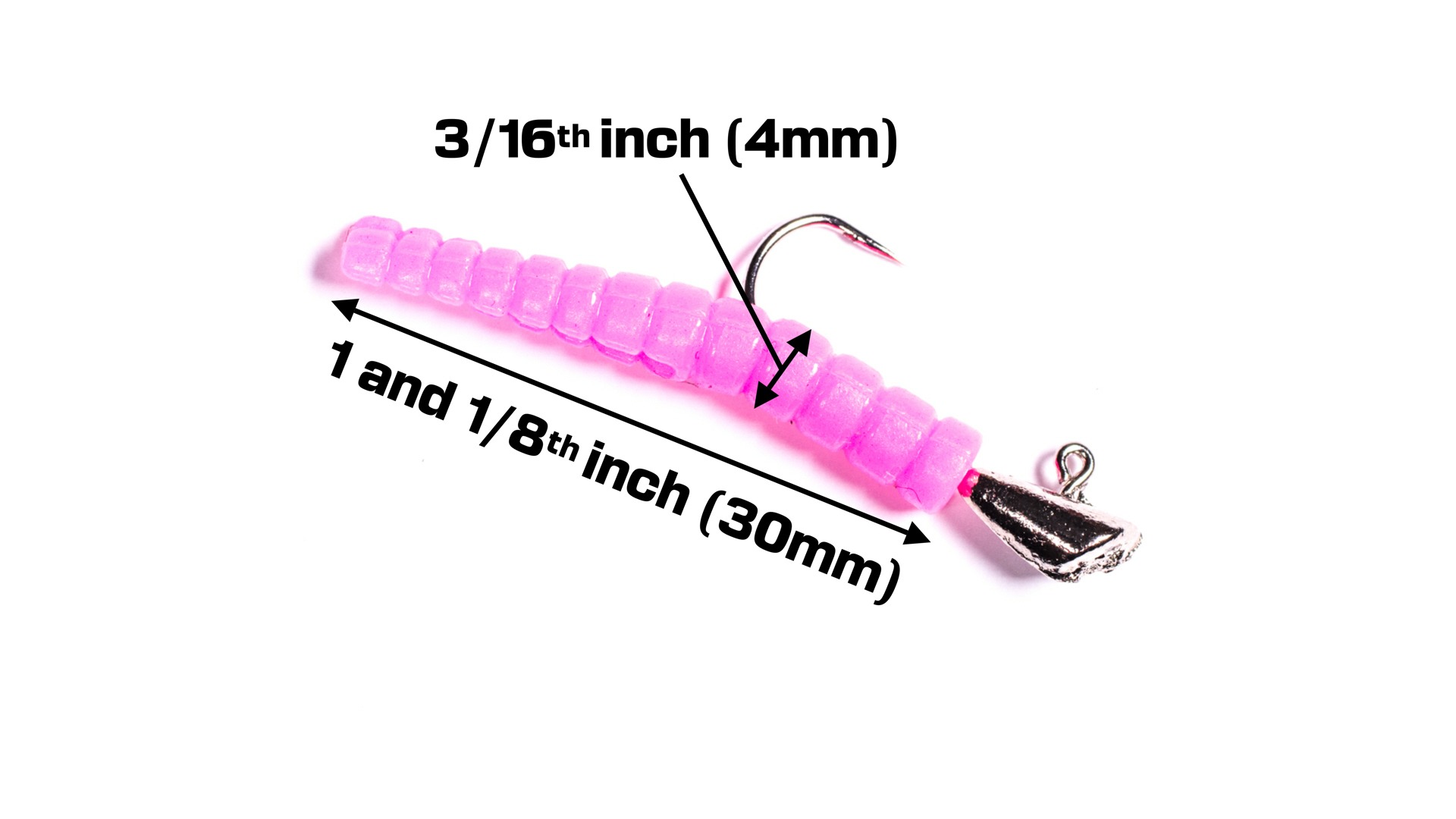
The total weight of the jig and the grub is exactly 1.00g (approx. 1/28th oz)
By making sure the body is mounted as straight and as centrally as possible on the hook – you can get a very nice horizontal sink and drift presentation. A feature which helps to give Trout Magnets a different look compared to many other jig style lures is that they are not designed to sink head first.
The grub is a nudge over 1 and 1/8th inches long (3cm) and the main body is 3/16th s wide (4mm). In combination a grub body mounted on a dart jig hook weighs exactly 1g (just under 1/28th oz). By my latest count, the bodies come in at least 41 different colour variations - but I may have missed some!

Trout Magnet Jig Hooks - notice the small "keeper" barb on the back of the shank to hold the lure in place (and crushed conventional barb on the left)
While it began as a hobby, the effectiveness of the lure for its inventors and their fishing buddies prompted Jeff Smith and Todd Gainer to form Leland’s Lure company. It is now distributed widely across the USA – including being available in Wal-Mart.
Standard Rigging for Leland Trout Magnet
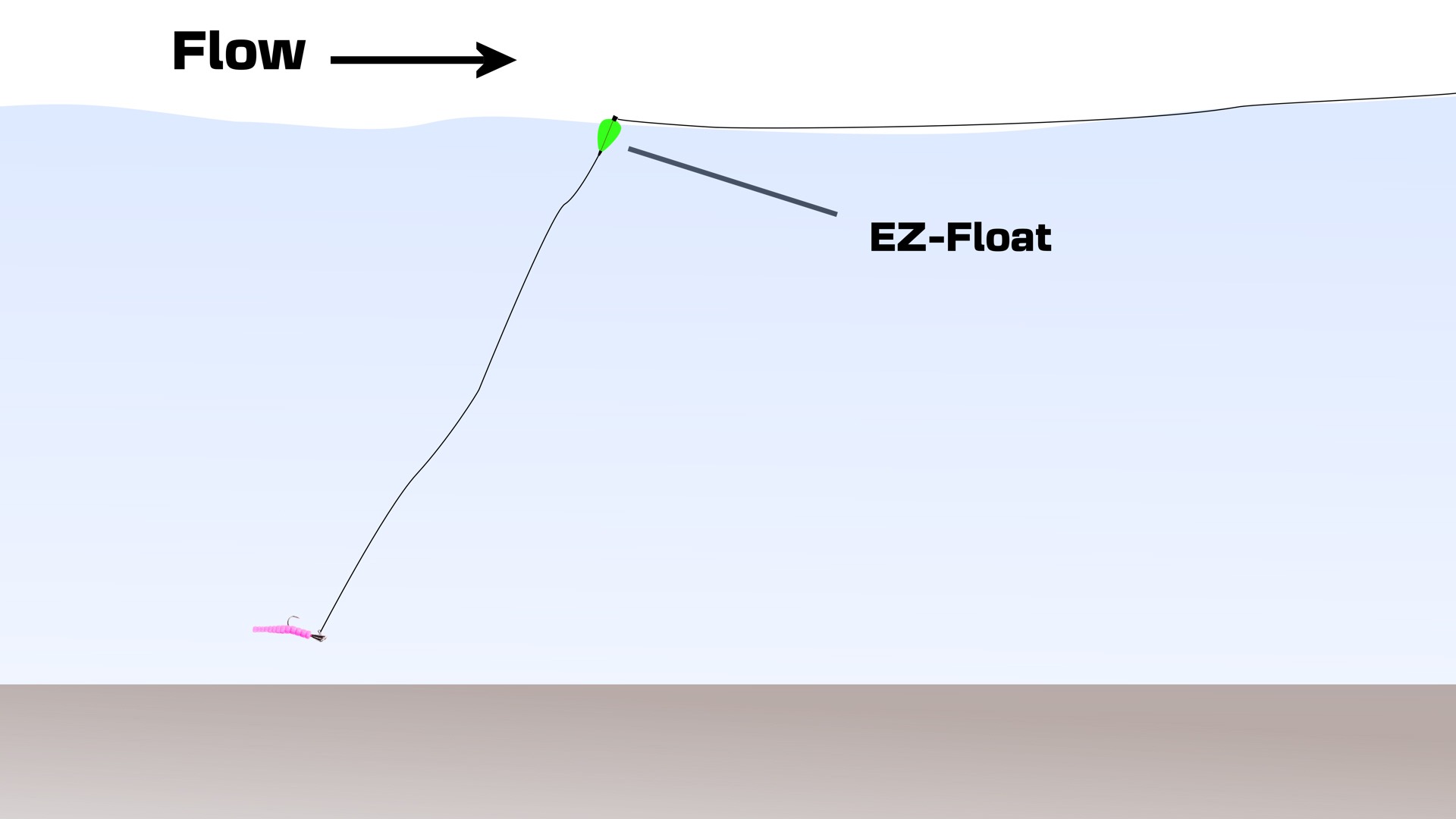
The peg holding the line in place is easy to remove and allows you to slide the float to the required depth before locking in place again
One of the clear messages from the company is that they have worked really hard to make a reliable, repeatable system that anyone can pick up and use. It is standardised and simple enough to give even novice anglers a good chance of success on stream.
The standard Leland Trout Magnet system consists of a light-power, fast (tip) action spinning rod and a small capacity (e.g. 500 to 1000 size) spinning reel. This is recommended to be loaded with 2lb line and then a leader of 2, 3 or 4lb fluorocarbon added.
The fine reel line will help with casting distance of the light lure. The manufacturers are careful to recommend correctly setting the drag and also to use a landing net..
To ensure consistency and confidence that you have the right setup, you can even buy Leland Trout Magnet nylon reel line and fluorocarbon leader material.
If you're wondering whether to try Trout Magnets, you can:
Heads Up (and Thank You): Fishing Discoveries takes part in the Amazon Associates programme which allows you to buy items at their regular price (i.e. no extra cost) while Amazon donates a percentage of their revenue from each sale to help support our site.

E-Z Trout Float with removable (black) line-locking peg
The standard setup is completed by adding one of the Leland E-Z Trout floats to the line and securing in place with the supplied peg. The float is easy to slide to adjust the fishing depth. Just remove the peg, slide the float up and then replace the peg.
You can see the setup process right from the source on Leland’s demo video here:
The typical aim will be to set the float so that the Trout Magnet fishes just above the bottom when it sinks to maximum depth. Then a cast up and across stream lets the angler drift the lure along the line of the current. Giving the float an occasional twitch will help to create a good jigging “induced take” movement and can provoke additional strikes from trout and other predators.
This system, and the thought behind it, are a sound way to set anglers up for success – even when inexperienced.
With that said, there is also plenty of fun to be had with some experimentation – particularly by anglers who have been in the game a bit longer.
Some “Non-Standard” Leland Trout Magnet Experiments
The arrival of Bait Finesse System baitcasters and rods capable of casting super ultra light lures of 1-g and below has been a significant development for anglers. Originally restricted to the most expensive of all BFS gear – the ability to cast these exceptionally light lures has now filtered down to the entry level price points.
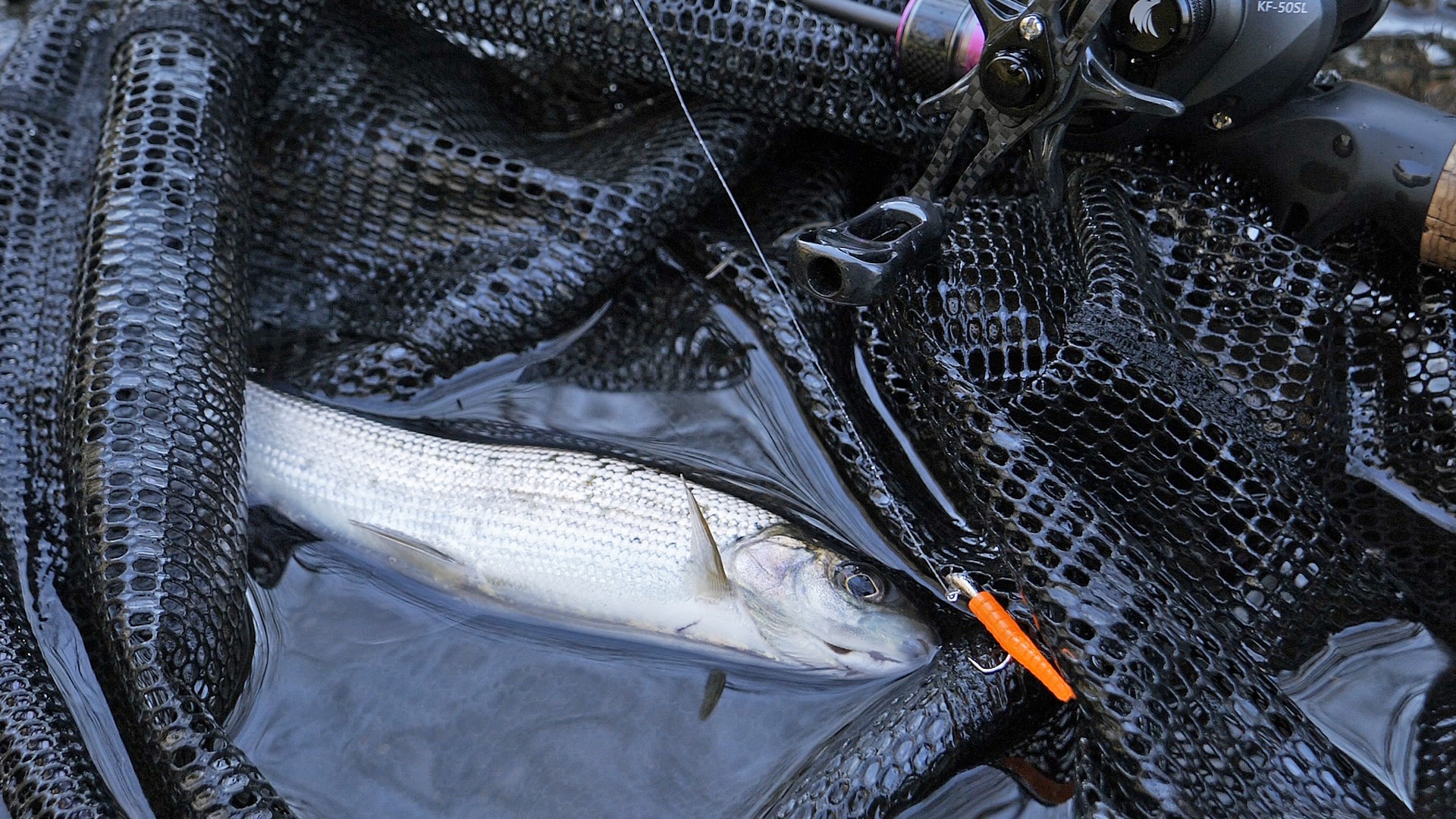
Grayling caught on an orange Trout Magnet - fished on the Dark Wolf Ultra reel and Ares C472ul Rod
It is particularly interesting that highly affordable reels such as the Dark Wolf Ultra and Black Knight II come with exceptionally light stock spools. With a simple and cheap addition of extra brake magnets, these reels are able to throw stupidly light lures with accuracy and control – which is insane. Cleaning (or upgrading) the bearings gives another significant boost to performance.
So now, whether you use a spinning reel or BFS reel, you have some great options while wade fishing to change up your presentations. Of course, you can still use the E-Z Float system – but tying that Leland Trout Magnet on to your line with nothing else to create a “hinge” in your system also has its advantages.
But why would you do this?
Advantages & Limitations of E-Z Floats
Several significant advantages are provided by the floats – including highly visual strike detection. The ability to achieve a drift in-line with the current even when you are casting out across the river, perpendicular to the flow is also a big one. Of course, you also have the ability to suspend the lure both at the feeding depth and also just above most of the snags.It is a useful rig and method that can work for everyone.
So why would you ever not use a float?
This is where the Fishing Discoveries ethos of cross-fertilising experience and ideas over multiple styles of fishing comes in handy. Now, undoubtedly, there are situations in fly fishing competitions on rivers that using a buoyant fly to suspend a weighted nymph may out-score tight line methods. In fact, Devin Olsen has a great story of exactly that in his book “Tactical Fly Fishing”.
At the same time, it is still true that the many variations of tight-line nymphing (Euro nymphing) have specific advantages in many situations when fishing on flowing water.
The lack of any “hinge” or sharp change in angle of the line connecting the rod tip to the lure or fly is absolutely huge for increasing both strike detection and hook-set percentage.
Because of the physics of stream-flow, the current just below the surface is significantly faster than water closer to the riverbed. This is due to the effect of friction of the water flowing over the bed of the river. What this means for you is the large surface-area float will always pull the Trout Magnet through faster than the sub-surface current. Often this may not be a bad thing – and can sometimes entice fish to strike.
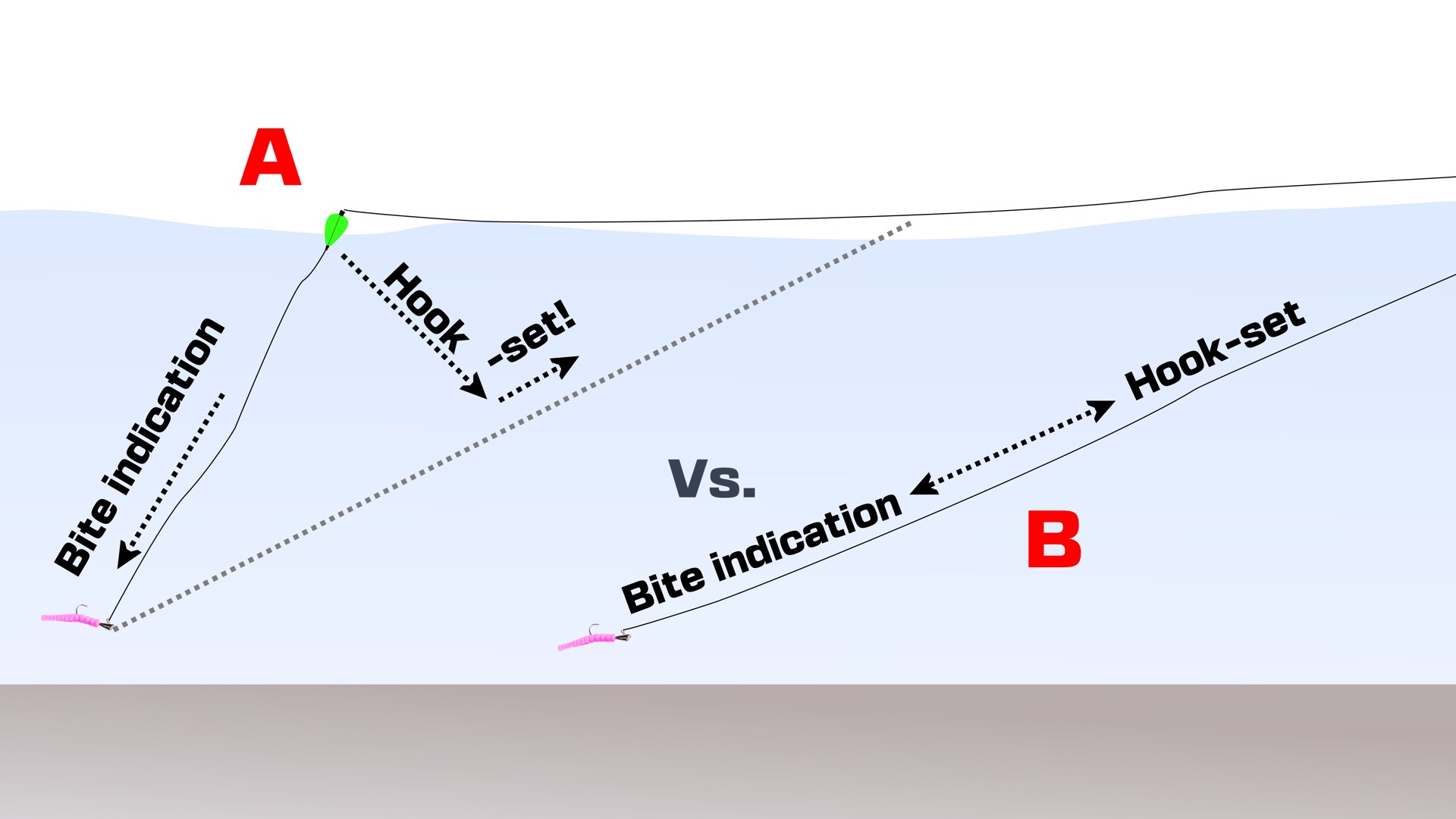
The force required to straighten out the "hinge" (A) dulls your hook-set compared to tight-line tactics (B)
On other days, there can be an advantage to more closely matching the true pace of the drift at the specific depth your lure is fishing. Plus, the resistance a fish feels as it grabs the lure may cause it to spit the fly (though a soft bait may encourage fish to keep hold longer compared to hard, unnatural feeling baits). When fish do keep hold of the lure long enough to register a bite, the float will also dull some of the hook-set power as you try to move it through water.
This is where light, low diameter line cutting through the surface current can be a game-changer compared to a bulbous float (or even a fly line laying on the surface for fly fishers...
Tight Line BFS with a Leland Trout Magnet (or Bead Head Nymphs!)
The key is to hold as much line as possible off the water by fishing with a raised rod tip.
Super fine braid is often used for reel line in Bait Finesse System fishing. The lightness of the line allows good casting (by minimising spool inertia) while also providing greater strength than comparable diameter fluorocarbon or nylon.
The almost zero stretch and low diameter (low surface area) allows more direct contact for bite detection by minimising drag from the current and faithfully transmitting everything that happens to the lure.
Similarly, hook-sets are very directly transmitted down the zero stretch line.
While not all bait finesse reels will have light enough spools to cast a trout magnet well, the ones that can do it may give you a great tactical option – particularly on streams where tight tree canopy makes it more challenging to use long fly rods.
Here are some tips (including the advantages to being able to line yourself up with the drift by wade fishing):
You have the option to keep pace exactly with the drift as the nymph is washed back at the true pace of the current (by reeling at just the right speed). Alternatively, you can mix in some twitches and also faster than the true dead drift retrieves too.
With a float, it is very difficult to actually match the pace of the water at the depth of your lure – so you are restricted to presenting faster than the current and jigging.
Fly Rod “Nymphing” with Trout Magnets and Mini Magnets
Both short-line nymphing and also the longer range classic French Nymphing (and its very close relative Mono-Rig Fishing extensively developed by Domenick Swentosky) will work great for presenting the standard Leland Trout Magnet on a fly rod.
However, with the invention of Leland’s Mini Magnet, you now have an absolutely awesome option for Spanish Leader presentations as well as French Leader/Mono Rig presentations too.
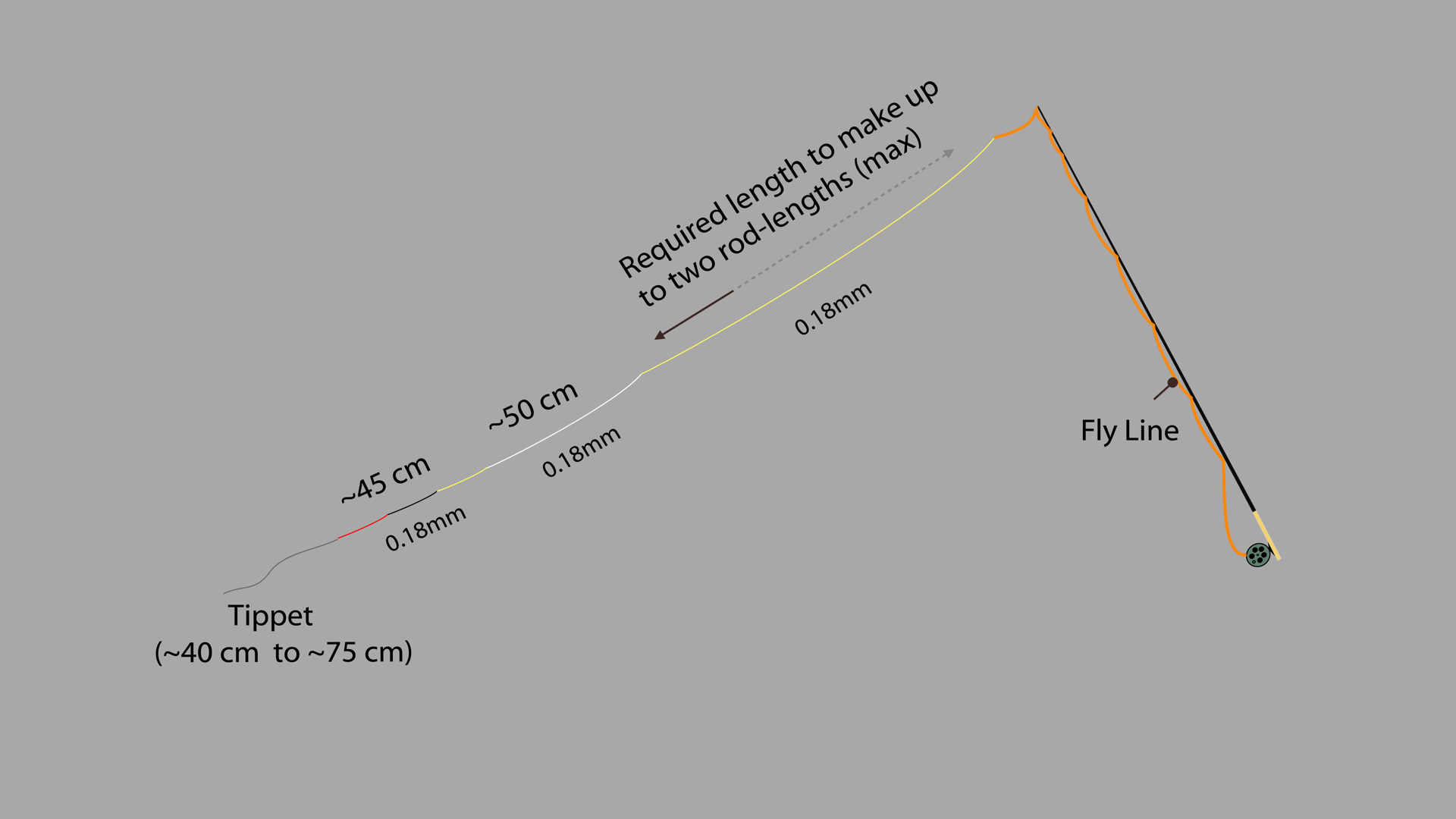
Spanish Leader Setup - ideal for presenting a single Mini Magnet to spooky fish!
The Mini Magnet weighs just 1/200th oz. and gives an even more subtle lure option for pressured fish – while incorporating a soft-bodied texture that could give you an advantage over standard, hard-bodied nymphs and flies.
It’s something I can see myself experimenting with quite a lot in future and if it proves to be interesting I'll certainly take some video to share with you.
If you struggle to get the Mini Magnets - for instance in the UK - here are a couple of options
Conclusions
Having tried the 152-piece Leland Trout Magnet kit, I've been really impressed with the results across a range of my local species including trout, grayling and chub. I'm sure many other species will also be tempted by them over this coming season.
While the folks at Leland recommend the E-Z Trout Float rig most strongly (probably to ensure even beginner anglers have a good chance of success with their lures) - they do also suggest the tight-line "straight through" rig too. Again, their general recommendation of using ultra light spinning gear is a reliable option across all ranges of angler ability.
Whether fishing under the float or tight line style, their recommendation - which I agree with - is to fish Trout Magnets on the drift, rather than grubbing around on the bottom. There are better lures for bottom-bouning and it doesn't take full advantage of the more horizontal gliding drift/sink profile of the Trout Magnet
With the advent of BFS in lure fishing and modern competition leaders in fly fishing, some very fun and effective tactical tweaks are now available for anglers who want to experiment with Trout Magnets.
The Mini Magnet, in particular, will be very interesting to include as an option on Spanish Leader tactics
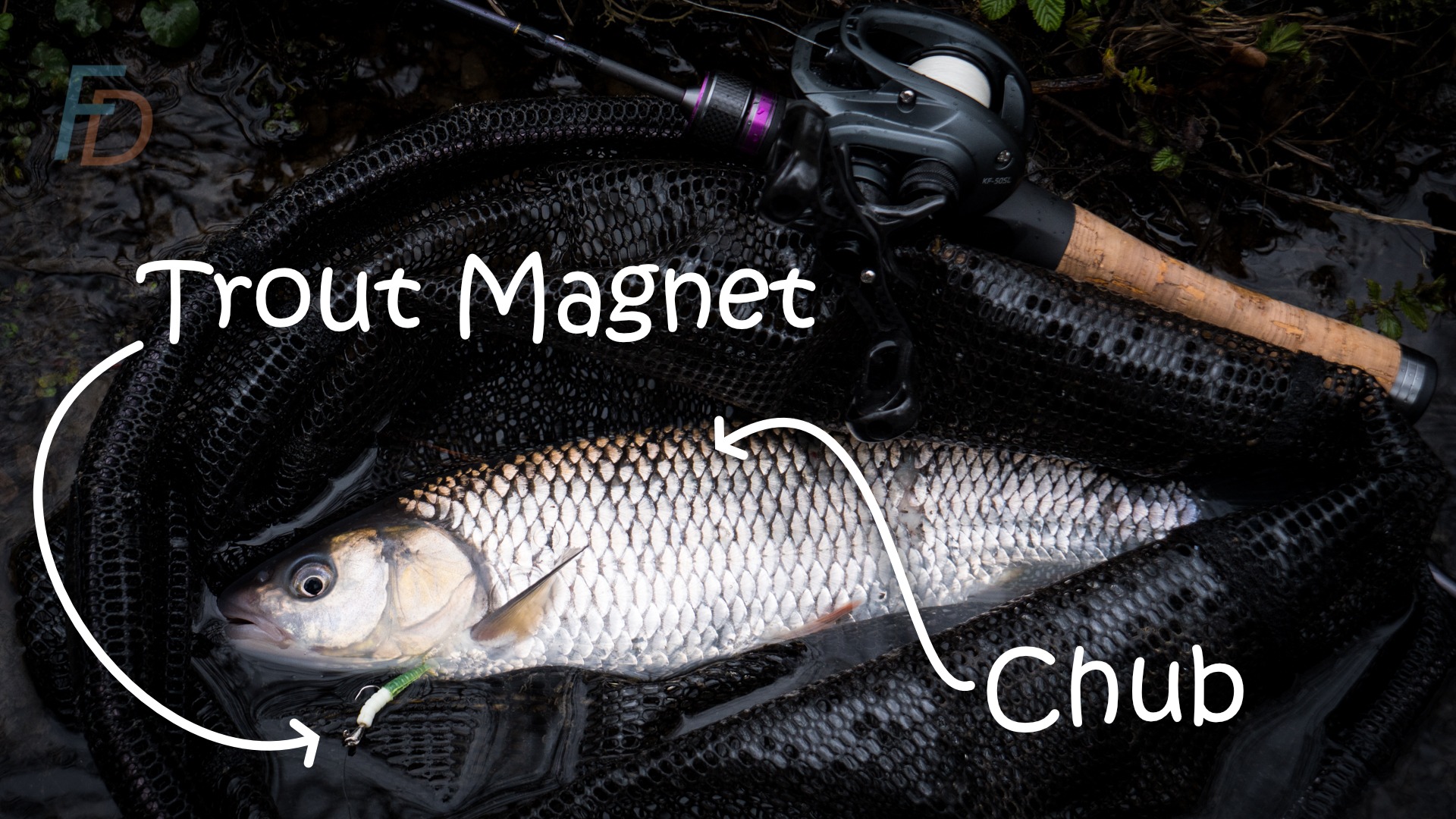
I hope you've enjoyed the content of this post and might have found some new ideas to try out in your own fishing.
Let me know your own experiences and what you think in the comments.
Paul

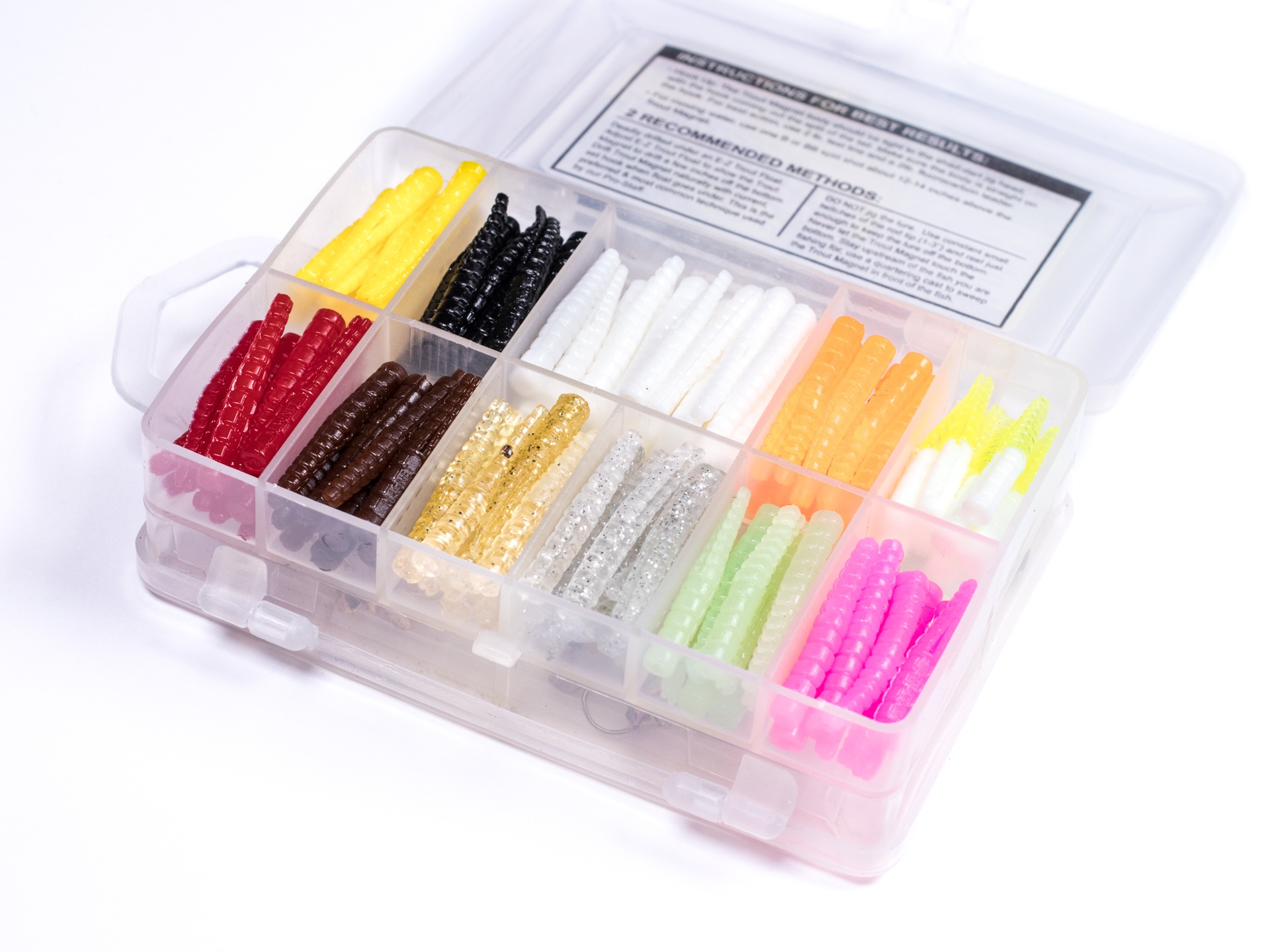

This is really high quality stuff, thank you and well done.
[…] Leland Trout Magnet Special Guide: Regular & Renegade Tactics! […]
[…] come pre-tied with a leader, so all the angler has to do is bait the hook and cast it out into the water. In addition, their small size and weight makes them ideal for casting into shallow water or tight […]
[…] Leland Trout Magnet Special Guide: Regular & Renegade Tactics! […]
[…] Leland Trout Magnet Special Guide: Regular & Renegade Tactics! […]
I like the design and looks of the Trout Magnets, been trying them the last couple of years, but have yet to catch a fish on one..
Coming out of fly fishing, I gravitated toward UL spin (and later BFS) with Trout Magnets being my favorite lure. Using them in both still and moving water, I’ve caught everything from fingerling to bass and even a 7# catfish. They just plain work. These days I much prefer BFS over spin so baitcasting a TM has long been a goal of mine. My best reel is a ’16 Aldebaran BFS with an Avail spool and I’ve found 1g doable but not enjoyable. Hoping that as reels improve, like your modified Dark Wolf, using a TM will become a no brainer. Thanks for continuing to advance this idea.